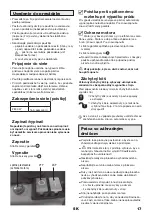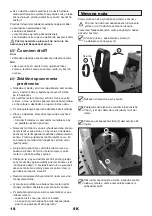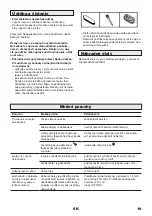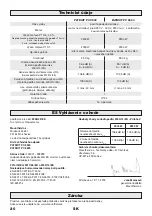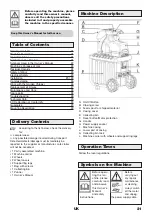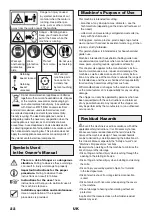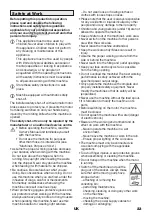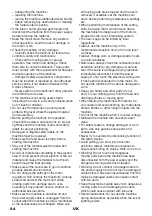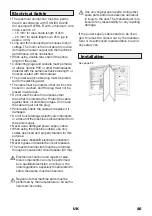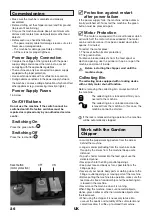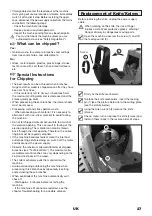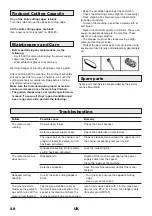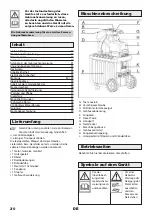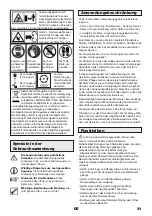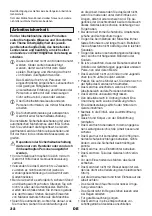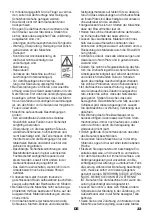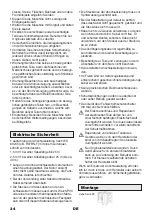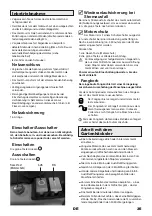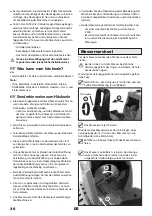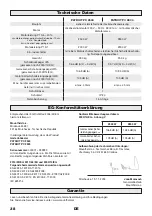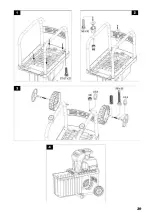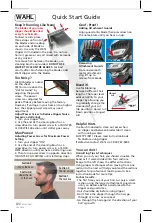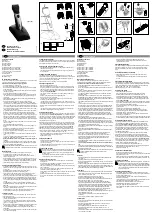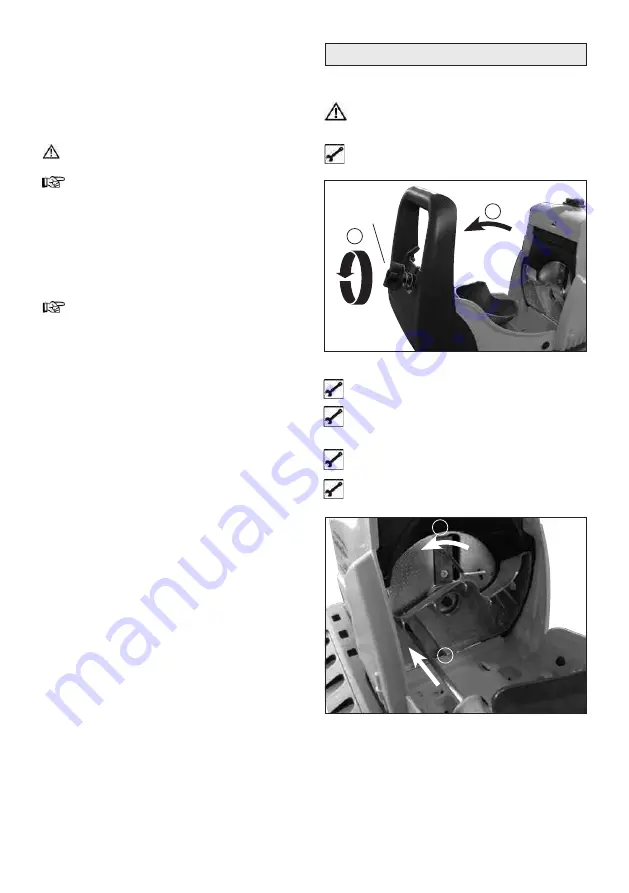
27
Before replacing the knife, unplug the power supply
cable.
When working on the knife, the risk of finger
injuries exists. Wear protective gloves. Warning!
Danger of injury by dangerous moving parts.
Open the machine, unscrew the screw (1) and tilt
the feed spout lid (2).
Firmly fix the knife mechanism.
To block the knife mechanism, insert the locking
pin (1) (see the picture below) into the cutting plate
(see the picture below).
Using the Allen wrench (2) remove the knife
(knives).
Check, clean, turn or replace the knife (knives) and
install it (them) back in the reverse order of steps.
Replacement of Knife/Knives
2
2
1
1
Screw
• If foreign objects enter the feed spout or the machine
starts giving out unusual sounds or vibrates, immediately
switch it off and let it stop. Before restarting the appli
ance, disconnect the power supply cable from the mains
and perform the following steps:
− Check the machine for damage.
− Replace or repair any damaged parts.
− Inspect the machine and tighten any loosened parts.
You must not repair the machine unless you are
authorised to do so (see "Safety Regulations").
What can be chipped?
Yes:
• Garden waste, for example, branches and cuttings
from trees and shrubs, and wilted plants.
No:
• Glass, metal objects, plastics, plastic bags, stones,
textile, roots with soil, food, fish and meat leftovers,
etc.
Special Instructions
for Chipping
• The best results can be achieved when branches,
twigs and other wood is chipped soon after they have
been cut from trees.
– If this material is left to dry out, it becomes hard,
the maximum cutting diameter is decreased and the
knives quickly go blunt.
• When processing thicker branches, the lateral shoots
must be removed.
• Processing wet and sticky garden waste:
− When processing such material, it is necessary to
alternate it with nonsticky material to avoid fouling
the machine.
• Do not let chipped material accumulate too much at
the ejection opening. This can result in fouling of the
ejection opening. The material can also be thrown
back through the inlet opening. Therefore, the collec
ting bin must be regularly emptied.
• If the machine becomes fouled, clean the inlet and
outlet openings. Before doing so, switch off the motor
and disconnect the power supply.
• Observe the maximum allowed diameter of chipped
branches (see "Technical Data"). The maximum allo
wed diameter of branches can vary depending on the
kind and freshness of the wood.
• The knife mechanism pulls the material into the
machine.
• Avoid overloading or blocking the machine when
processing thick branches by repeatedly inserting
and extracting these branches.
• When overloaded, the machine automatically swit
ches off.
− Wait approx. 5 minutes before restarting the
machine.
− If the machine still cannot be restarted, see the
chapter Troubleshooting for a possible solution.
UK





